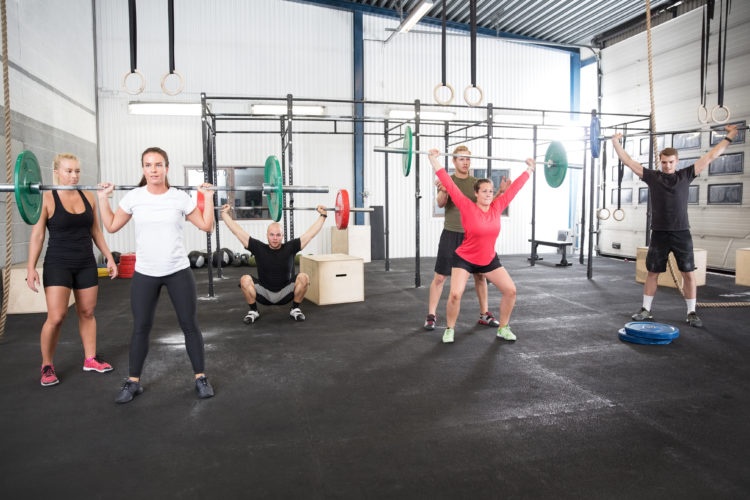
CrossFit culture has taken our world by storm with as much fervor and enthusiasm as many other workout fads, but what sets this fad apart from the rest is that it doesn’t seem to be going anywhere. If you aren’t an active participant in CrossFit, you most likely know someone who’s now visiting a place called the “Box” on a regular basis and is using words like “WOD” and “burpee” in their everyday vocabulary.
A common reaction when something new grabs such a large audience so quickly is to ask, “What’s the catch?” When you start hearing about injuries and see your friends jump off the very CrossFit box they so eagerly jumped on in the first place, you start to wonder just how safe this new workout fad is and wonder why some continue while others quit and move onto something else.
CrossFit is an easy workout to make speculative assumptions about for the fact that it is still so new, but studies are showing that CrossFit is no more dangerous than many of the other sports and workout routines we embrace and encourage. The biggest culprit in CrossFit injuries is generally a person’s lack of experience and taking on more than they should too quickly. Running isn’t considered a dangerous sport, but if you aren’t a consistent runner and you decide on a whim to go run ten miles one day, chances are you’re going to injure yourself. The same concept is true for CrossFit. If someone new to the workout walks into their first class and tries to keep up with the veteran athletes, they are putting themselves at risk for injury.
Common injuries in CrossFit include:
- Shoulders
- Back
- Knees
- Elbows
- Wrists
The specific exercise movements causing the injuries vary and can affect different parts of the body depending on your form, fitness level, and preexisting injury condition.
Common shoulder injuries –
Rotator cuff tears and subacromial impingement caused by movements such as pull ups, rowing, clean and jerk, dips, muscle ups, and repetitive overhead lifting.
Lower back/lumbar strains –
These injuries can be caused by deadlifts, squats, or wall ball workouts.
Knee injuries –
Pain in the knees around or under the kneecap is often a result of jumping, squatting, or running.
Tendonitis in elbows –
Caused by repetitive movements including; pull-ups, cleans, and workouts involving a front rack position.
Wrists –
Injuries can occur from exercises with repetitive movement such as handstands, barbell griping, kettlebell swings, push-ups, etc.
If injuries are going to happen from CrossFit, they are most likely going to occur within someone’s first year of participation, or to someone who participates in the workouts less than three times per week. Proper form and technique are crucial in avoiding injury and must be practiced on a consistent basis if maximum performance is desired. Like in any physical activity, learning to listen to your body and moving at a pace that is sustainable for your own personal physical growth is key to keeping you at your gym… or “Box”, and out of the doctor’s office.





